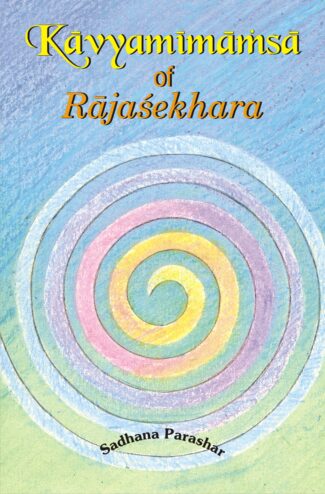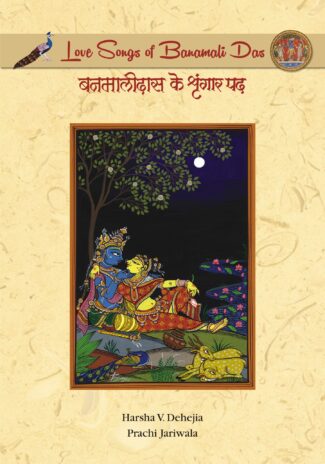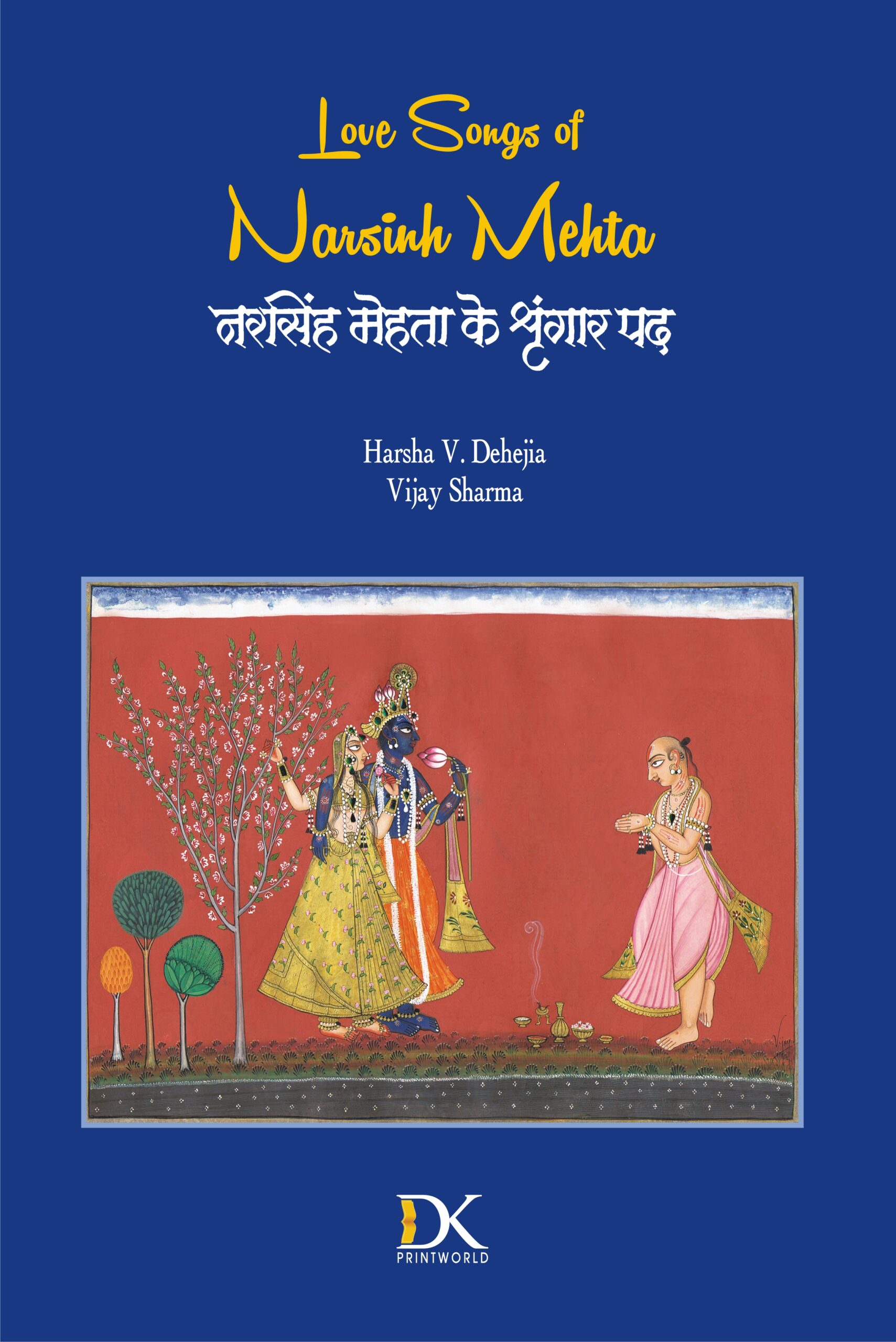Showing 41–50 of 121 results

Written sometime during 880-920 ad by Rajasekhara: an eminent poet, this first English translation of Kavyamimamsa is a kind of practical treatise for poets: kavisiksa manual highlighting, all possible attributes that go into the making of a good poet and a good poetic composition.
As a body, Sanskrit writings unfold Indias millennia-long, almost unbroken intellectual tradition: not only of philosophy and grammar, but of literary theory as well. The concepts and critical theories, which the Sanskrit poeticians advanced or the issues they sought to address, inhere both universal appeal and validity. And, with certain modifications, these can well live up to the demands of modern literature. In this long and powerful tradition of Sanskrit literary theory that marked a definitive begining with Bharatas Natyashastra (first century ad), Kavyamimamsa is a monumental work. Written sometime during 880-920 ad by Rajashekhara: an eminent poet, dramatist and critic, it is a kind of practical treatise for poets: kavishiksha manual highlighting, as it does, all possible attributes that go into the making of a good poet and a good poetic composition. Among other relevant aspects, Rajashekhara also includes here a systematic exposition of the views/opinions of his predecessors, with illustrations of the literary practices of various times and climes put down after careful empirical observation. Now, when there is a growing scholarly interest in the study of Sanskrit literary theory and how it is positioned vis-a-vis the Western critical tenets, Dr. Sadhana Parashar brings Rajashekharas classic within everyones reach offering the first-ever, complete English translation of Kavyamimamsa, with its original Sanskrit text and comprehensive explanatory notes. For sure, it is invaluable to the scholars of linguistics and literary criticism.

Swami Muni Narayana Prasad renders a superbly novel analysis of this Upanisad in the backdrop of recent developments in various scientific disciplines and attempts to show that mysticism is a corollary to scientific investigation.
Kenopanishad is one of the major Upanishads containing the quintessence of the teachings of the ancient Indian seers. It represents their spiritual quest to apprehend the nature of the Ultimate Being and comprises the yearning for the wisdom that explains the relation of human life to the world and the reality. The beauty of this Upanishad is greatly enhanced by the dialogue between the disciple and the preceptor, through which it continues its quest. Swami Muni Narayana Prasad, the renowned scholar on the Upanishadic tradition, renders a superbly novel analysis of this difficult text in the light of the modern mans need for value and spiritual security making a strikingly beautiful synthesis between the ancient and the modern. Presenting the teachings of Kenopanishad in the backdrop of the recent developments in the area of physics, chemistry, biology and psychology is no mean task and constitutes the exclusiveness of this book. The disciplines of science in the pursuit of the basic truth stumble at some invisible and unconceptualisable Reality, which may be another name for mysticism. Through very cogent arguments the author has successfully vindicated that mysticism is a corollary to scientific investigation and not opposed to it. The authors prolonged association with the Upanishadic thought along with the insight he received from the works of his preceptors Narayana Guru and Nataraja Guru makes the commentaries of this text stimulating and unique. The original Sanskrit text along with the Roman transliteration and English paraphrasing enhance the value of this monumental commentary.

The thirteen texts of this book address various aspects of Krishnas childhood in the Harivamsha. It demonstrates that these stories of Krishnas childhood were carefully composed by brahmanas who knew fully well what they were doing.
Written over a thirty-year period, the thirteen texts of this book some of which have been updated, others translated from the original French address various aspects of Krishnas childhood in the Harivamsha. As a part of a continuous effort to better understand this oft-neglected complement to the Mahabharata, the present book demonstrates that these stories of Krishnas childhood were carefully composed by brahmanas who knew fully well what they were doing.
During the ten or so years he spends as a herder in the forest surrounding Mathura, Krishna prepares himself to kill the evil king Kamsa: when packs of wolves spring from the hairs of his body, he manifests his destructive power; he appears as a true avatara when he dives into the Yamuna to subdue the snake Kaliya; he reveals himself as a new Brahma able to create a new world when he uplifts Mount Govardhana with which he has just identified himself, then sheltering cows and herders in his own body.
It is authors contention throughout these chapters that these episodes cannot be dismissed as a hotchpotch of legends borrowed from the Abhiras or similar pastoral tribes. Neither does one do justice to the genre when one reinterprets the story symbolically, as if it were the product of an overactive imagination. Rejecting these positions, the author instead attempts to show here how these talented storytellers carefully crafted a narrative, often using material drawn from their own Vedic tradition, in order to address the new concerns of their audiences.

Gita is a great work emphasing on work and worship. Krsna advises Arjuna that he should not expect results. Instead, concentrate on his work with complete vigour and veneration. Gita is a path to sublimity where work meets worship as presented in this magnum opus here.
Gita is a great work emphasing on work and worship. Krsna advises Arjuna that he should not expect results. Instead, concentrate on his work with complete vigour and veneration. Gita is a path to sublimity where work meets worship as presented in this magnum opus here.

This edition of Bhagavad Gita elaborates how each of its chapters and even verses leads to the next one, all in line with the overall scheme of thought. Acknowledging Gita as a yoga-sastra (science of dialectics), it explicates how this methodological device strings together all the seemingly contradictory statements; revealing an ineffably uniting experience, befitting a scientifically and practically conceived non-dualism or advaita.
The Bhagavad Gita, in this commentary is realized as a philosophical treatise of universal significance, having a bearing on the personal existence of each of us, as it is inseparably one with the existence of the whole. Taking cognizance of the overall development of the thought in the text, it enunciates the first half as a visualization of the oneness of the total system of existence and life with one Absolute Reality; with the second half insightfully proclaiming the unity of every individual, while maintaining ones characteristics, with the Cosmic Form, the concrete version of the Absolute or Bhagavan. It elaborates how each of its chapters and even verses leads to the next one, all in line with the overall scheme of thought. Acknowledging Gita as a yoga-shastra (science of dialectics), it explicates how this methodological device strings together all the seemingly contradictory statements; revealing an ineffably uniting experience, befitting a scientifically and practically conceived non-dualism or advaita. Though written as a sort of varttika to Nataraja Gurus famous commentary on the Gita, this one is appreciable as an independent book, since it delves into the depth of each verse directly in the view of the core philosophical vision, the Gita intends to communicate.

The Lilavati, a vithi, is the magnum opus of Ramapanivada, a versatile poet of eighteenth century ce. It is the best of all available specimens of vithi literature in the history of Sanskrit drama. The plot of the Lilavati Vithi is based on the love story between Virapala, the king of Kuntala, and Lilavati, the daughter of the king of Karnata.
The Lilavati, a vithi, is the magnum opus of Ramapanivada, a versatile poet of eighteenth century ce, a resourceful and multitalented writer of almost all the genres of creative compositions, belonged to Kerala, India. The Lilavati is the best of all available specimens of vithi literature in the history of Sanskrit drama. The plot of the Lilavati Vithi is based on the love story between Virapala, the king of Kuntala, and Lilavati, the daughter of the king of Karnata.
The text of the present volume of Lilavati Vithi is carefully edited and presented with a Sanskrit commentary Praci in the light of Sanskrit dramaturgy as well as Indian rhetorics. The commentary Praci treats to critically evaluate various poetical aspects, like figures in speech and metres. The characteristics of vithi with the suitable examples from the Lilavati, the thirteen numbers of vithyangas, the type of amukha or prastavana are explored in the introduction. It also presents an account of the history of the literature of available and non-available vithi type in its introduction.
Present edition of Lilavati Vithi along with the Sanskrit commentary Praci and an extensive introduction in English and appendices will interest scholars and students of Indology who are focused on the study of Sanskrit literature. It will benefit the readers interested in classical Sanskrit literature. It will also be a supporting tool for the researchers of the history of classical Sanskrit literature in general and vithi literature in particular.

This volume, while discussing the poetic genius of Banamali, portrays the varied forms of pata paintings, associated with the painters of Puri. Though the Rasalila of Krishna and the gopis is their favourite, the topic of dashavatara is very common in pata painting, displaying a special liking for navagunjara painting.
The heart of Odishan arts lies in the villages of Odisha. The songs and dances, the wall paintings and patachitras, fabrics and textiles, all are rooted in the rural sensibility of Odisha. When its people sing the love songs of Krishna or paint his leelas and kridas, they recreate Vrindavana in their on village square. Krishna sharingara reflects and echoes in each leaf and flower, and song and dance of Odisha. It is more vibrant in the verses of the eighteenth century Banamali Das, who wrote a moving Krishna poetry. He celebrated the many leelas and kridas of Krishna and in doing so he experiences every hue and shade of Krishna shringara. He reminds one of the works of Jayadeva and Vidyapati, and enters the mind and heart of Radha more than any other poet. Grounded on the theology of Chaitanya, he bountifully uses words such as ujjala rasa, mohajana and ashta sakhi, firmly establishing him as part of the Gaudiya tradition.
This volume, while discussing the poetic genius of Banamali, portrays the varied forms of pata paintings, associated with the painters of Puri. Though the Rasalila of Krishna and the gopis is their favourite, the topic of dashavatara is very common in pata painting, displaying a special liking for navagunjara painting. It also contains a conversation with Sujata Mohapatra, an accomplished Odissi dancer, who dances to the compositions of Banamali Das.

Love Songs of Narsinh Mehta is a commentary on the love songs of Narsinh, adi-kavi of Gujarat. Narsinh sings the glory of Krishna in total devotion as if Krishna is sitting in front of him. For him, Krishna is divine and human, both at the same time. Being Krishnas love, he brings in all emotions and cues of devotional love to his poetry.
Love Songs of Narsinh Mehta is a commentary on Narsinh Mehtas love songs. Narsinh (1408-65), a Vaishnava bhakti poet of medieval India, is considered as the adi-kavi of Gujarat. He is also regarded as a shringara kavi, a poet of romance. The quintessence of his bhakti is prem and his prem has inherent bhakti, and therefore his poetry is regarded as shringara bhakti kavya. Essentially shringara is the romantic celebration of the other, and when Narsinh’s other is none other than Krishna, his shringara kavya becomes Krishna bhakti, where Krishna is both divine and human, at the same time. Singing for Krishna, Narsinh celebrates his swami through amorous verses and divine surrender like Jayadeva.
He sat in a temple and relentlessly sang for his Lord, living through absolute poverty. Nothing made him more jovial than singing the glory of his Krishna. The only man for Narsinh is Krishna, and for the latter Narsinh is a woman at heart. Narsinh, through his songs, brings in the cue of all romantic feelings and moments, recreates the idyllic Vrindavana in ones mind, and he returns that Vrindavana a Vaikuntha with the footfalls of his Krishna.
Through this commentary, the author Harsha V. Dehejia introduces one to the fullness of Narsinhs poems, thereby making one known to Narsinh in and out.

Love Songs of Rasakhan is one among the numerous works of medieval Muslim Vaishnava poets. His original name was Said Ibrahim. On seeing a picture of Shrinathji, Said Ibrahim instantly fell in love with Krishna. His love for Krishna made him yearn for a vision of Krishna.
Love Songs of Rasakhan is one among the numerous works of medieval Muslim Vaishnava poets. A sixteenth-century poet, Rasakhan was born in a Pathan Muslim family at Pihani in Uttar Pradesh. His original name was Said Ibrahim. On seeing a picture of Shrinathji, Said Ibrahim instantly fell in love with Krishna. His love for Krishna made him yearn for a vision of Krishna. He stayed with Krishna devotees in Braj, but could not get a vision of Krishna. He unsuccessfully tried his luck at the Gopalpura Shrinathji Temple and finally went to Govindkund and lay there three days without food and water. Pleased, Shrinathji gave him darshan and this made him to move on the Pushtimarg with the guidance of Gosain Vittalnath.
He spent his entire life in Brij composing songs of the many lilas of Radha and Krishna with the pen-name, Rasakhan. Touched by the sensuality of the love of Radha and Krishna, he produced many mellifluous and melodic songs, celebrating their love.
Other than his poetic genuis, this bilingual illustrated volume contains the stories of 252 Vaishnavas, articles on Rasakhan: A Poet and His Poetry; Medieval Muslim Vaishnava Poets; Rasakhan and the Fluidity of Identity; The Mind of Rasakhan; Muslim Vaishnavas of Bengal; and Poets, Painters & Patrons, being Krishnalal Sharma; Narmada Prasad Upadhyaya; Vidya Rao; Harsha V. Dehejia; Sumanta Banerji; and Harsha V. Dehejia as respective authors.
| There are no products |